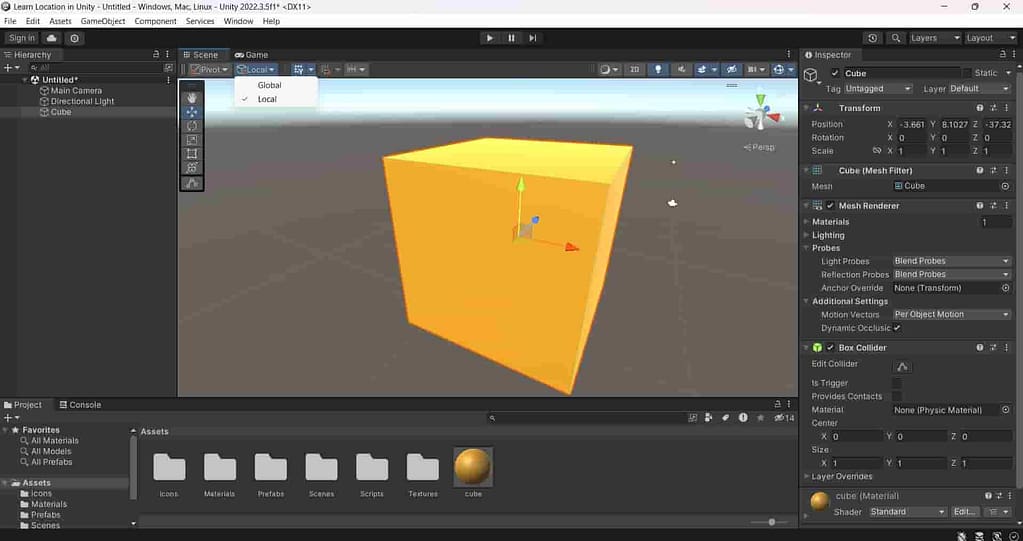There are links on this site that can be defined as affiliate links. This means that I may receive a small commission (at no cost to you) if you purchase something through the links provided on this website.
For details Click here.
In the world of game development, creating immersive gameplay experiences is essential. One crucial aspect that contributes to this immersion is the movement and positioning of game objects within the game environment. This aspect is the Translation of Game Objects in Unity. Unity, a popular game development engine, offers a wide range of tools and features to accomplish this, including the translation of game objects.
Translation:-
Translation, in the context of Unity, refers to the process of moving game objects from one point in a scene to another. It allows developers to manipulate the position of objects dynamically, creating seamless animations, interactions, and transitions within the game world. This fundamental concept forms the basis for building engaging gameplay mechanics and visual effects.
Implementing translation in Unity is relatively straightforward. Unity provides a convenient scripting API known as Transform, which is attached to every game object within a scene. The Transform component handles the position, rotation, and scale of the objects.
To achieve translation, developers can utilize the various functions provided by the Transform component. The most commonly used function is “Translate,” which moves the object in the specified direction by the given amount. This function takes parameters such as the direction vector and the distance to translate, allowing developers to control the precise movement of game objects.
Aside from the Translate function, the Transform component offers additional features to fine-tune the translation behavior. For instance, developers can specify whether the translation should be relative to the object’s local coordinate system or the global coordinate system. This flexibility allows for complex movement patterns and hierarchical transformations within the game hierarchy.
Order of Occurrence:-
One important aspect to consider when implementing translation is the order in which it occurs. Unity follows a sequential execution model, meaning that the order in which scripts are executed affects the outcome. Therefore, developers must carefully orchestrate the order of translation operations to achieve the desired effects.
Furthermore, Unity offers a visual editor, known as the Scene View, which provides a graphical representation of the game environment. This tool enables developers to interactively position and translate game objects, making it more intuitive to create, test, and fine-tune translations.
In conclusion, the translation of game objects in Unity is a vital aspect of creating compelling gameplay experiences. It allows developers to dynamically move objects within the game world, resulting in engaging animations, interactions, and visual effects. With Unity’s Transform component and various functions like Translate, developers have the necessary tools to implement accurate and versatile translations. Understanding the basics of translation and its usage within Unity empowers developers to add a new dimension of interactivity and immersion to their games.
